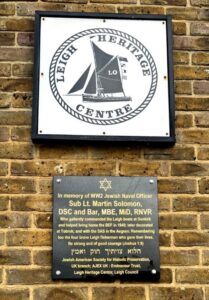By Jerry Klinger


BOYNTON BEACH, Florida –Nearly 340,000 British, French, and Belgian soldiers were trapped on May 30, 1940 at Dunkirk, France, on the northern French coast behind a narrow, hastily constructed defensive perimeter. It was barely seven miles long. Nazi aircraft strafed and killed and killed the exposed soldiers hunkering on the beaches.
The heroic British Expeditionary army sent to help the French defend against the Germans had been defeated. French army remnants barely hung on as the German Blitzkrieg crushed them. The Belgian army, no match for the German tank divisions, fought bravely but were forced to surrender.
Virtually the entire British military command and the core of the British army were staring at complete annihilation while stranded on the coast of Dunkirk. German victory over all of Britain seemed inevitable.
For days, efforts had been underway to bring the men back to England. The water depth was far too shallow for the big British ships to get close in to take the men to safety. The British Expeditionary Force was desperate. The best that was hoped for was to rescue maybe 40,000 to 50,000 of the men. The rest…their fate was unthinkable.
Britain needed a “Hail Mary Pass” to save the men. Britain needed the impossible.
May 29th, a “Hail Mary Pass” order was issued for all boats and crews along the southeast coast of England.
“Senior Naval Control Officer, London
Requisition all motor yachts 30 ft. overall and upwards, not drawing more 3’ 6” to proceed to Southend Pier forthwith, with volunteer crew and there to go to Sheerness with 3 days food and full complement of fuel.”
British Naval High Command commandeered all civilian boats in the southeast of England to rescue the men trapped and dying on the Dunkirk beaches.
Naval officers were assigned to organize groups of these civilian craft. 850 Small boats answered the call. Nearly 250 would sink in the rescue operation.
Jewish Naval Sub. Lt. Martin Solomon was assigned to organize the fishing boats along the Thames estuary near Leigh on the Sea. He performed his mission and then took personal command of Leigh’s entire fleet – six flat-bottomed fishing boats, “Cockle Brawleys.” The Leigh Boats were perfect for rescuing the men at Dunkirk. The boats were over 30’ long and 10’ wide. They could float on barely inches of water. They could ferry the men to deeper water where large British warships awaited. They could load their “Little Boats” up with men and sail them back to England.
The Little Boats of Leigh did both.
“Admiral Ramsey, in command of ‘Operation Dynamo,’ (the evacuation from Dunkirk), said of the Leigh boats, “The conduct of the crews of these cockle boats was exemplary. They were all volunteers who were rushed over to Dunkirk in one day. Probably none of them had been under gunfire before and certainly none of them under naval discipline… Yet they maintained perfect formation throughout the day and night and all orders were obeyed with great diligence even under actual shellfire and aircraft attack.”
Solomon was described as a bit overweight with a youthful, affable face. He did not look like what was needed. Yet, he was exactly what was needed. One look into his eyes, and one saw steel grey hardness of command, determination, and courage.
Solomon sailed back to England with rescued soldiers. He returned to Dunkirk only to have his ship sunk by German aircraft.
Solomon wrote:
“I went through the unpleasant experience of being machine-gunned in the water, after we had been sunk, by four very persistent Junkers 87 diver bombers. They even dropped incendiary bombs in an attempt to catch any floating oil on fire. They have not got much mercy, those Germans. I then had to swim for seven hours towards a place that was already occupied by Jerry and eventually got back to England in charge of a French fishing boat, dressed as a French sailor, only to be arrested as a spy!”
He had been injured by the bombing. He was exhausted. He was suffering from extreme exposure. Back in England, he was hospitalized for months.
Solomon was awarded the Distinguished Service Cross for gallantry for his part in the Dunkirk evacuations.
Solomon received a second Distinguished Service Cross for rescuing men in Tobruk harbor while under heavy tank fire during the North African campaign. He would be Mentioned in Dispatches, a high military recognition, for his service in Egypt. His service in the Eastern Mediterranean remained shrouded in secrecy. He was believed to have been associated with British intelligence – M I 6, of James Bond fame.
After the war, Solomon went into private business, some say “Export Import.” In March 1956, he married a Spanish-born Norwegian cabaret star nicknamed “Miss Freckles,” Vida Bendix. Three months later, his body was found in Madrid’s Crillon Hotel. His death…mysterious. He was 41 years old.
Early 2024, the Jewish American Society for Historic Preservation worked with Martin Sugarman, JASHP’s U.K. partner. Sugarman is a noted Jewish military historian, author, educator, and archivist for the Association of Jewish Ex-Servicemen and Women. Together, an effort was begun to place a public historical interpretive marker honoring Solomon as the Commander of the famed Leigh Boat Flotilla that rescued so many from the desperate Dunkirk shore.
We approached a number of sites. There was hesitation. The Israel – Gaza – Hamas war raged. Antisemitism flared throughout England. Questions of attacks against anything honoring Jews created tensions, vandalism, and worse, were feared and, at times, realized.
The Endeavour Trust, Leigh Heritage Centre, and Leigh Council stood firm. They courageously granted us permission to join them in honoring Sub. Lt. Martin Solomon by siting the marker publicly on their building for all to see.
The marker was ordered. The stone had to come from India. There was another Gaza War delay. The fastest way to receive shipments from India was to pass through the Suez Canal. The ship carrying our stone could not traverse the Suez Canal. It was too dangerous.
The Houthis in Yemen, at the mouth of the Red Sea, were firing missiles and attacking ships trying to sail the international waters.
The merchant ship from India had to sail all around Africa. It took weeks extra to arrive.
A special thanks to Bedini Memorials who carved and fixed the stone to its site.
In the face of hatred, ignorance, bigotry, and rabid antisemitism, the story of Jewish commonality, patriotism, and courage must be told.
The simple text of the memorial reads:
(Prominent Star of David)
In memory of WW2 Jewish Naval Officer
Sub. Lt. Martin Solomon DSC and Bar, MBE, MiD, RNVR
Who gallantly commanded the Leigh boats at Dunkirk and helped bring home the BEF in 1940; later decorated at Tobruk; and with the SAS in the Aegean. Remembering too the four brave Leigh fishermen who gave their lives.
Be strong and of good courage (Joshua 1:9)
הלוא צויתיך חזק ואמץ
Erected 2024 by Jewish American Society for Historic Preservation, UK branch; AJEX UK : Endeavour Trust; Leigh Heritage Centre; Leigh council.
*
Jerry Klinger is the founding president of the Jewish American Society for Historic Preservation.
Very moving. Very important to preserve the memory of this heroic man.